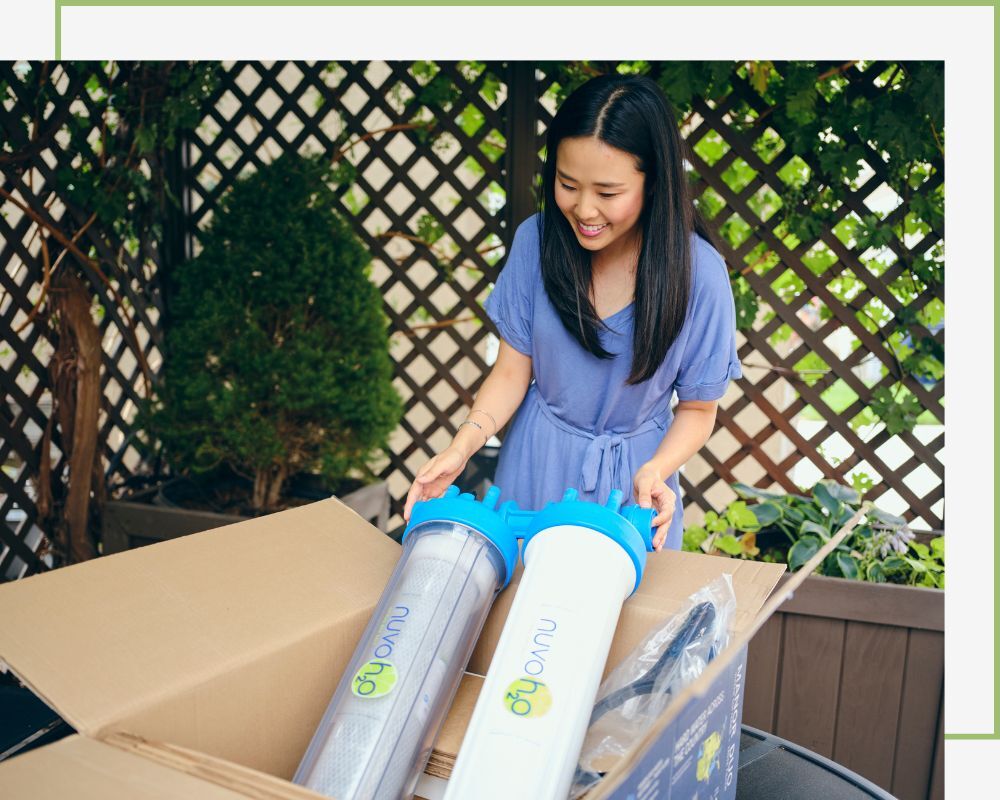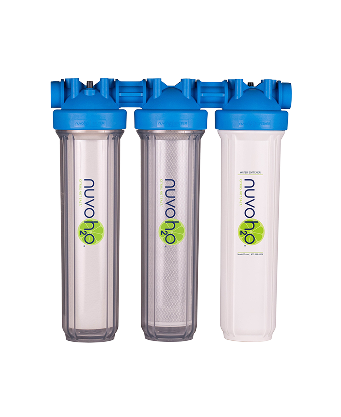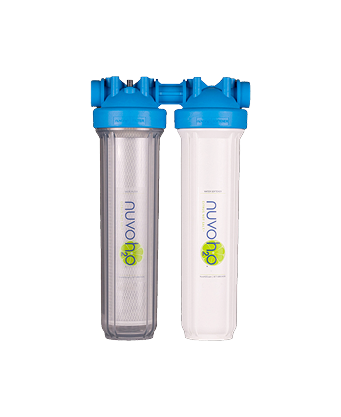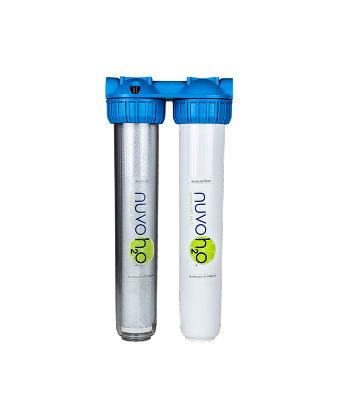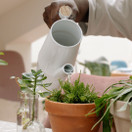
Why Hard Water Could Be Ruining Your Houseplants
15th Oct 2025
If you’ve ever looked at your favorite houseplant and wondered why its leaves are turning brown at the tips, why the soil has a chalky white crust, or why it just doesn’t seem to thrive, your water may be the culprit. Many plant parents focus on light, soil, and fertilizer, but overlook one of the most important factors in houseplant care: water quality.
Hard water, which is full of minerals like calcium and magnesium, might be great for your daily coffee or shower, but for plants it can spell trouble. The effects build up slowly, leaving even the most attentive plant owners scratching their heads.
There is a solution, though. Switching to soft water for plants can restore your greenery to health and keep your indoor jungle thriving.
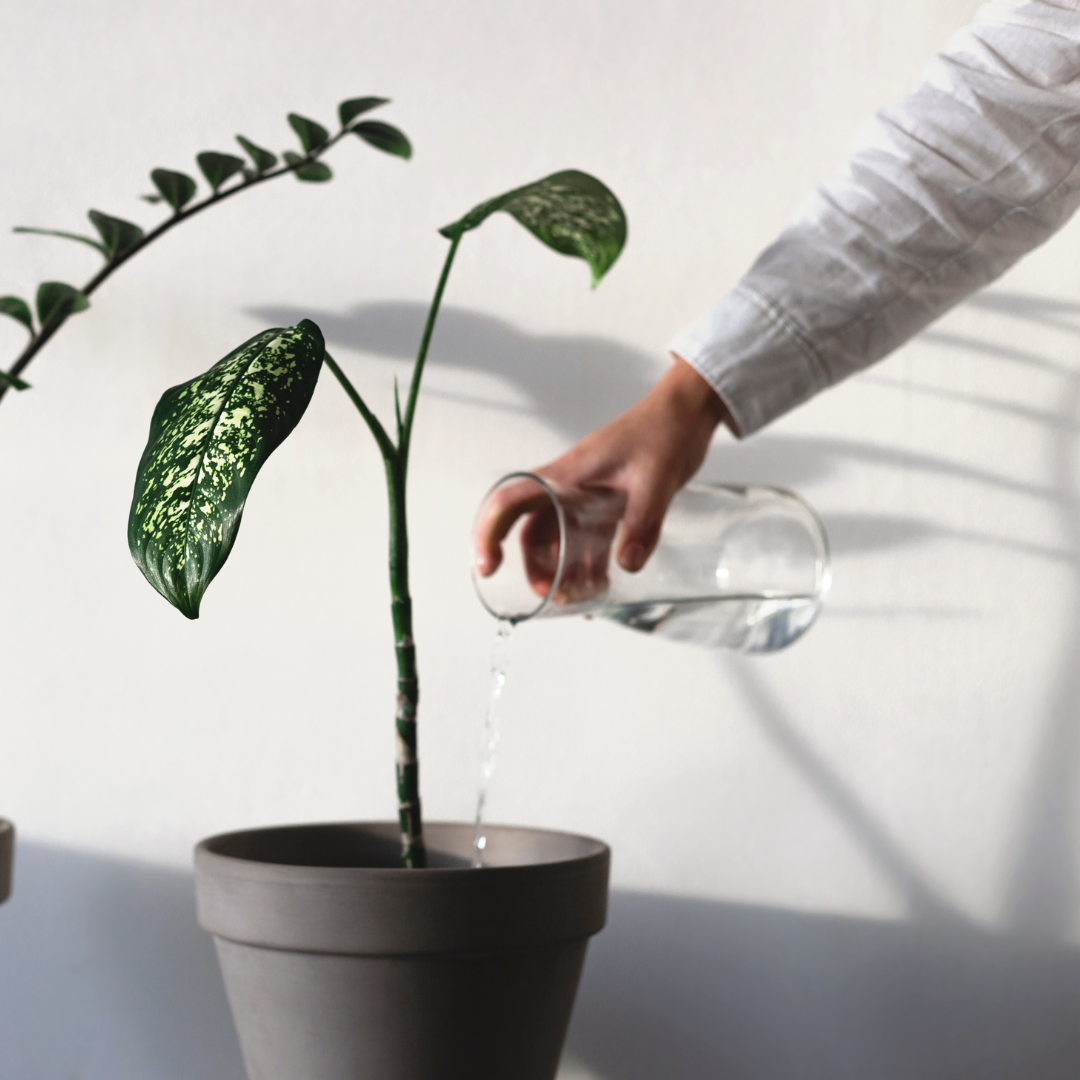
Hard Water and Houseplants: What’s Really Happening
At first glance, your tap water might seem perfectly fine for your plants. After all, it’s clear, it quenches your thirst, and it keeps your home running. But when it comes to houseplants, what’s inside the water matters more than how it looks.
Hard water and houseplants don’t mix well because the mineral content, mainly calcium and magnesium, slowly takes a toll on soil, roots, and leaves.
Mineral Buildup in Soil
Every time you water with hard water, tiny amounts of calcium and magnesium salts are left behind. Over weeks and months, these minerals accumulate in the soil, creating a dense, salty environment that roots struggle to grow in.
This mineral crust can also block proper drainage and air flow, both of which are essential for healthy plant roots.
pH Changes That Disrupt Nutrients
Hard water often shifts the soil’s pH toward alkaline levels. When soil becomes too alkaline, important nutrients like iron, phosphorus, and manganese get “locked up,” making them unavailable to your plants.
Even if you’re fertilizing regularly, your plants may still show symptoms of nutrient deficiency. This is one of the most frustrating hard water effects on plants because it feels like your effort is wasted.
Visible Leaf Damage
Brown tips, yellowing leaves, and stunted growth are some of the most obvious signs of hard water plant damage. What’s happening is simple: roots can’t absorb enough water and nutrients because of the soil imbalance, and the stress shows up in the leaves first.
Over time, foliage becomes less vibrant and growth slows, leaving your once-lush plant looking tired and weak.
Residue on Pots and Leaves
That chalky white crust forming around your terra-cotta pots or the powdery film on your plant’s leaves? That’s mineral residue left behind by hard water. On leaves, it can clog stomata (the tiny pores plants use to “breathe”), further limiting their ability to photosynthesize and thrive.
When you add it all up, the hard water and houseplants combination can quietly sabotage your indoor garden. What seems like minor inconveniences (crusty pots, crispy leaves, or slower growth) are actually warning signs of a deeper problem with water quality for houseplants.
Switching to soft water for plants helps prevent these issues at the source, giving your greenery the healthy foundation it needs to grow strong and vibrant.
Which Plants Suffer Most From Hard Water?
Some houseplants are especially sensitive to hard water effects on plants. If you own these popular varieties, pay extra attention to your water quality:
- Peace Lilies: Prone to brown tips with hard water
- Spider Plants: Salt buildup causes crunchy leaves
- Fiddle Leaf Figs: Sensitive to pH swings and root stress
- Calatheas: Tropical divas that dislike minerals and chlorine
- Orchids: Delicate roots that need gentle hydration
If these sound like your plants, improving water quality for houseplants could be the game-changer you’ve been missing.
Why Soft Water Benefits Plants
Switching to soft water plant care is like giving your houseplants a clean, balanced diet. Instead of drowning them in excess minerals, soft water hydrates without adding unnecessary stress.
Here are the top benefits:
- Healthier root systems: With better water absorption, roots can take in the nutrients they need to fuel steady growth.
- Brighter, stronger leaves: No more crispy tips or yellow spots. Plants watered with soft water are noticeably more vibrant.
- Longer-lasting blooms: Flowering plants like orchids and peace lilies hold onto their blossoms longer when watered with cleaner, mineral-free water.
- Fewer soil issues: Without salt crusts or alkaline buildup, you won’t have to repot as often just to refresh the soil.
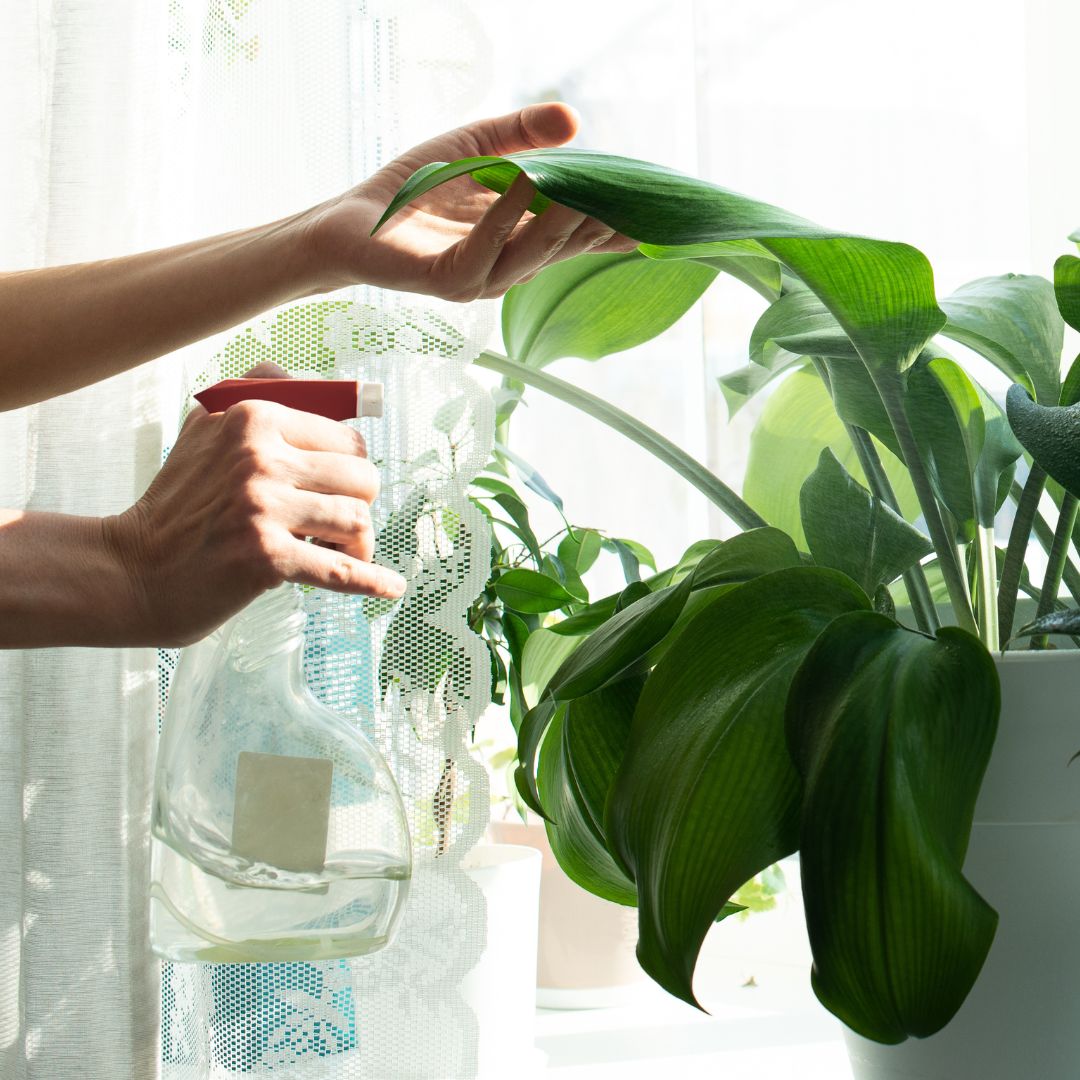
Houseplant Care Tips for Better Watering
Water quality is a big factor, but it’s not the only one. Pairing soft water for houseplants with smart care practices will give you the lushest results.
Here are a few tips:
- Water thoroughly, but less often: Let the soil dry slightly between waterings, then water deeply so roots grow stronger.
- Use room-temperature water: Cold water can shock roots, especially tropical plants.
- Wipe down leaves: If you previously used hard water, gently clean off mineral residue so stomata (plant pores) can “breathe” again.
- Rotate your plants: Evenly distribute light exposure so growth stays balanced.
- Refresh soil as needed: If you’ve had issues with hard water before, repotting every year helps reset the soil’s pH and nutrient levels.
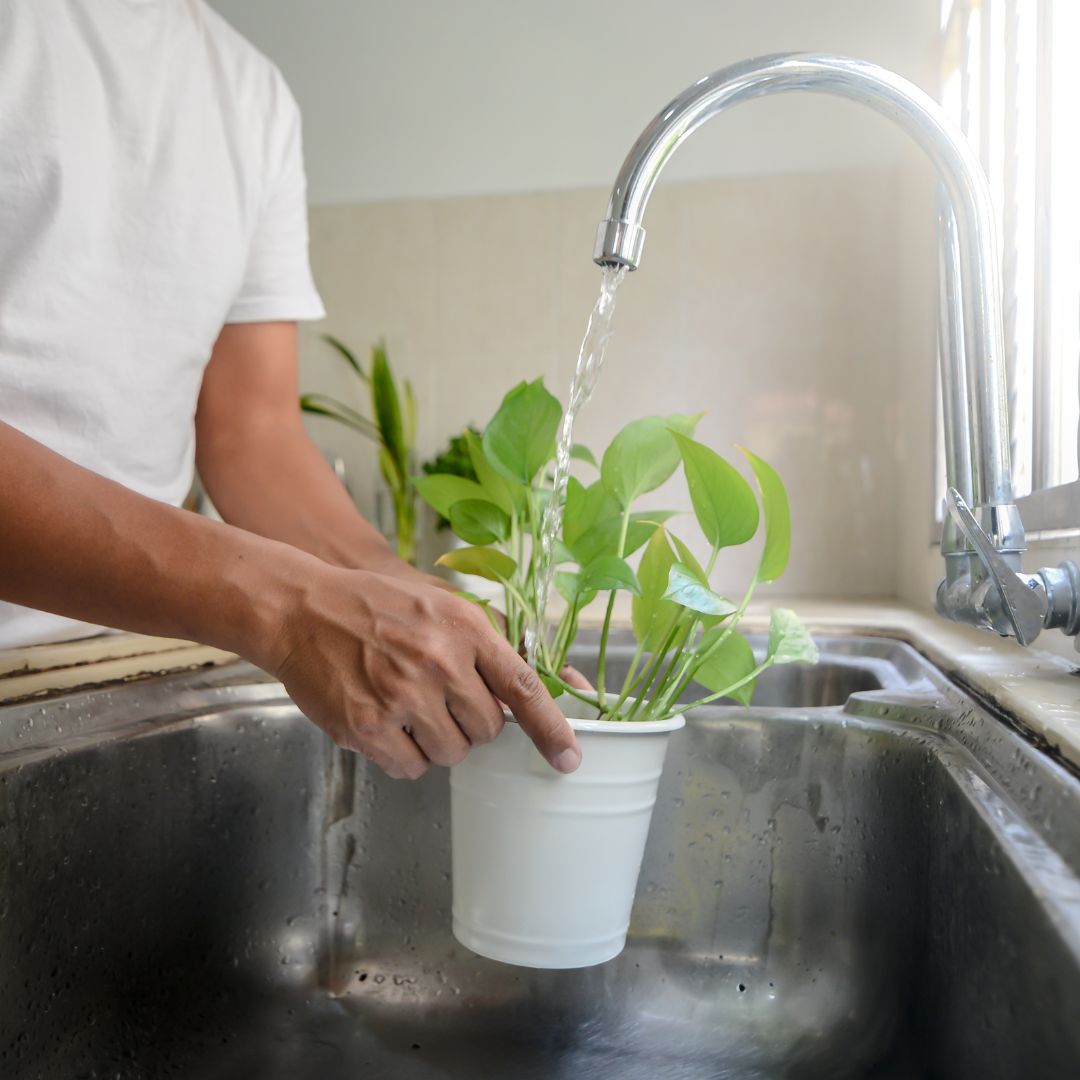
Keep Your Home and Plants Healthy With Soft Water
If your houseplants have been struggling and you’ve tried adjusting everything else, the problem may not be your green thumb; it may be your water. Hard water can quietly sabotage even the best plant care routine, but soft water restores balance and helps your plants thrive.
With the right water softening system, you can protect plants from hard water, enjoy lush growth year-round, and feel good knowing your water is as kind to your plants as it is to your home.
